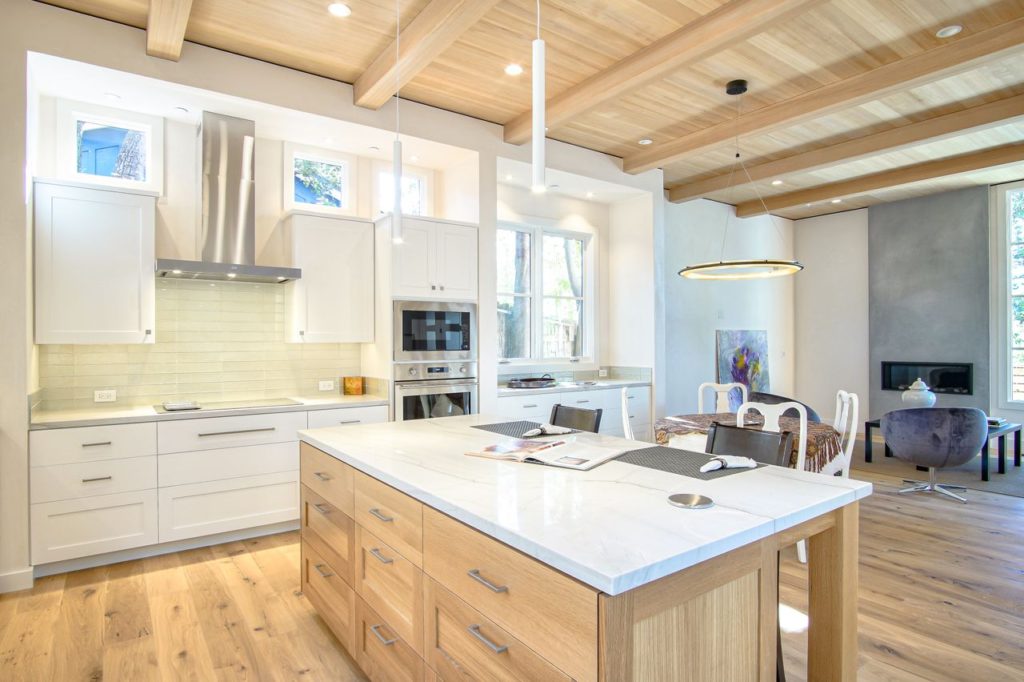Today we’ll examine a few of the features of 21st century building science that set a new standard for new construction homes. Our listing on 3rd Avenue 2NW of Dolores is a great example of how these features work together to create the best possible living experience.
Induction Cooktop
Some parts of California such as Berkley have outlawed new gas appliance hook ups. We don’t know if or when that will happen here on the Monterey Peninsula, but there are many benefits to induction cooking. When cooking with gas, you really need to turn on the exhaust fan a few minutes before you start cooking to create a sufficient draw of air from the cooktop. You’re not introducing noxious gases to your home, the cooktop heats up faster than gas, and if you pull the pan away from the cooktop and touch it, it is no longer hot resulting in greater safety for children. Chefs love induction because of the precise control and cooler temperature in the kitchen.
ERV – Energy/Enthalpy Recovery Ventilator
An Enthalpy Recovery Ventilator, commonly referred to as an Energy Recovery Ventilator, promotes healthy air exchanges throughout the home. The Zhender ERV takes the warm air from the wet areas like the kitchen, bathrooms, and laundry space that collects to be exhausted from the house. Before it exhausts, the air is moved across the incoming air that, in our climate on the Monterey Peninsula, is often cooler. This allows the house to capture and balance the heat with constant air changes. One of the benefits of this system is that if the house was a vacation home or second home and the owner wasn’t in town for a month, you would walk in and the air would be fresh as though the windows were open all day by constantly introducing fresh air through two HEPA filters. The Zhender ERV has the largest capacity for any of the current residential models based on the number of cubic feet per minute it can move through the house. Most residential ERV’s can exhaust warm air from one wet area of the home, but the Zhender is equipped to manage all wet areas with ports throughout the house to introduce new air. The Zhender ERV is the best fit for managing air quality, and for those with strong allergies, it is a wonderful tool.
Behind the Walls
We asked the builder, “what are the features that are not visible to the naked eye?” A relatively new system of wall sheathing that has an integrated water resistant barrier. For this particular home, the barrier is impregnated onto the surface of the sheathing. The seams are then taped, caulking is applied to nail holes, and you are left with a completely water resistant barrier and air barrier to create a much tighter house that retains its energy while allowing the home to breathe with its great permeability rating. A woven plastic material is stapled on the wall before the siding is installed creating a quarter inch gap between the siding and the sheathing to allow for a drain plain. This is not a requirement in our area yet, but in the Pacific Northwest where they deal with significant moisture issues, it is required. While our climate is more temperate, it’s great to implement these forward thinking features in an effort to prevent wall failures and avoid moisture intrusion. All walls leak, but walls that are designed properly will allow that wall to dry out, and that is the objective. We’re giving the water a place to go to drain out of the house, while allowing the siding to breath and last longer.
Mechanically Ventilated Foundation
To ensure you have the best possible foundation, modern building science encourages mechanical ventilation. Mechanically exhausting a foundation space with a fan allows you to control the direction of moisture and keep the crawl space fresh.
Solar Panels
New construction homes with permits pulled in 2020 are required to include solar. This is great for energy efficiency as California construction moves toward more energy efficient building practices.


